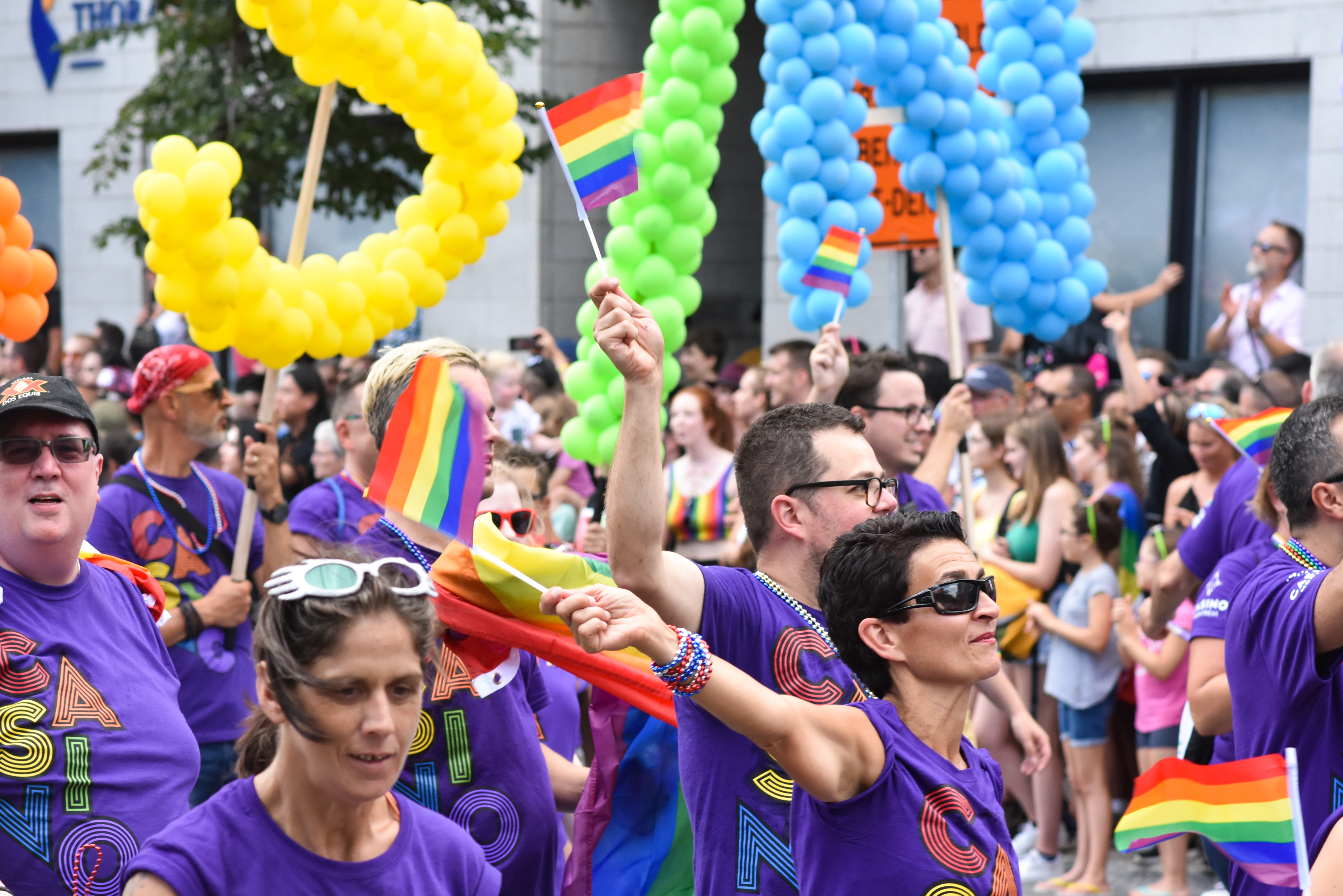This year’s Pride parade attracted nearly 300,000 people, according to festival organizers. An estimated 12,000 people took over René-Lévesque Boulevard last Sunday afternoon as they marched in the 36th edition of Fierté’s Montreal Pride parade. With over 250 activities and drawing more than 2.5 million visitors, Fierté Montreal is the most-attended Pride festival across Canada.
Pride 2019 marks the 50th anniversary since the Stonewall riots, a series of demonstrations that paved the way for the gay rights movement. To commemorate the anniversary, in an effort to increase inclusion within the festival, Fierté organizers took various initiatives focusing, in part, on diversifying and indigenizing the festival.
A “Reconciliation Ceremony” kicked off festivities on the festival’s opening night. Additionally, land acknowledgement statements were made at the start of each show during the 11-day-long festival.
Another important initiative was the creation of the “Two-Spirit Space,” a safe space designed for Two-Spirit people, as well as non-Indigenous festival-goers seeking to find out about First Nations sexual and gender diversity.
Located in the Parc des Faubourgs, the space consisted of an outdoor seating area and a teepee designed by Innu artist Serge Ashini and MMIWG inquiry commissioner, Michele Audette. A knowledge keeper was available at the space to give advice and answer questions every day from 5 p.m. to 7 p.m. throughout the festival. These resources are all part of Fierté Montreal’s plan to put diversity at the forefront, says Communications Coordinator for the festival, Mathieu Audette. “[Fierté Montreal’s] new mandate focuses on diversity, inclusion and working towards reconciliation,” explained Audette. “We plan to continue working with communities in order to ensure that Pride is as inclusive and safe a space as possible.”
Diversity was also at the forefront last Sunday when Asian LGBTQ+ communities were positioned at the head of the parade, a group Montreal Pride’s Board of Directors says is often invisible. Also marching in the parade were organizations advocating for the further advancement of the rights of people living with HIV/AIDS, of trans persons, of migrant trans persons, of missing and murdered Indigenous women and girls, of sex workers, of intersex persons and of LGBTQ+ seniors.
High in colour and emotion, violet, the last colour on the rainbow flag, was highlighted as the colour theme for this year’s festival. People marching in the parade as well as attendees of the final day of festivities were spotted wearing purple and proudly waving rainbow flags.
Photos by Laurence Brisson Dubreuil
